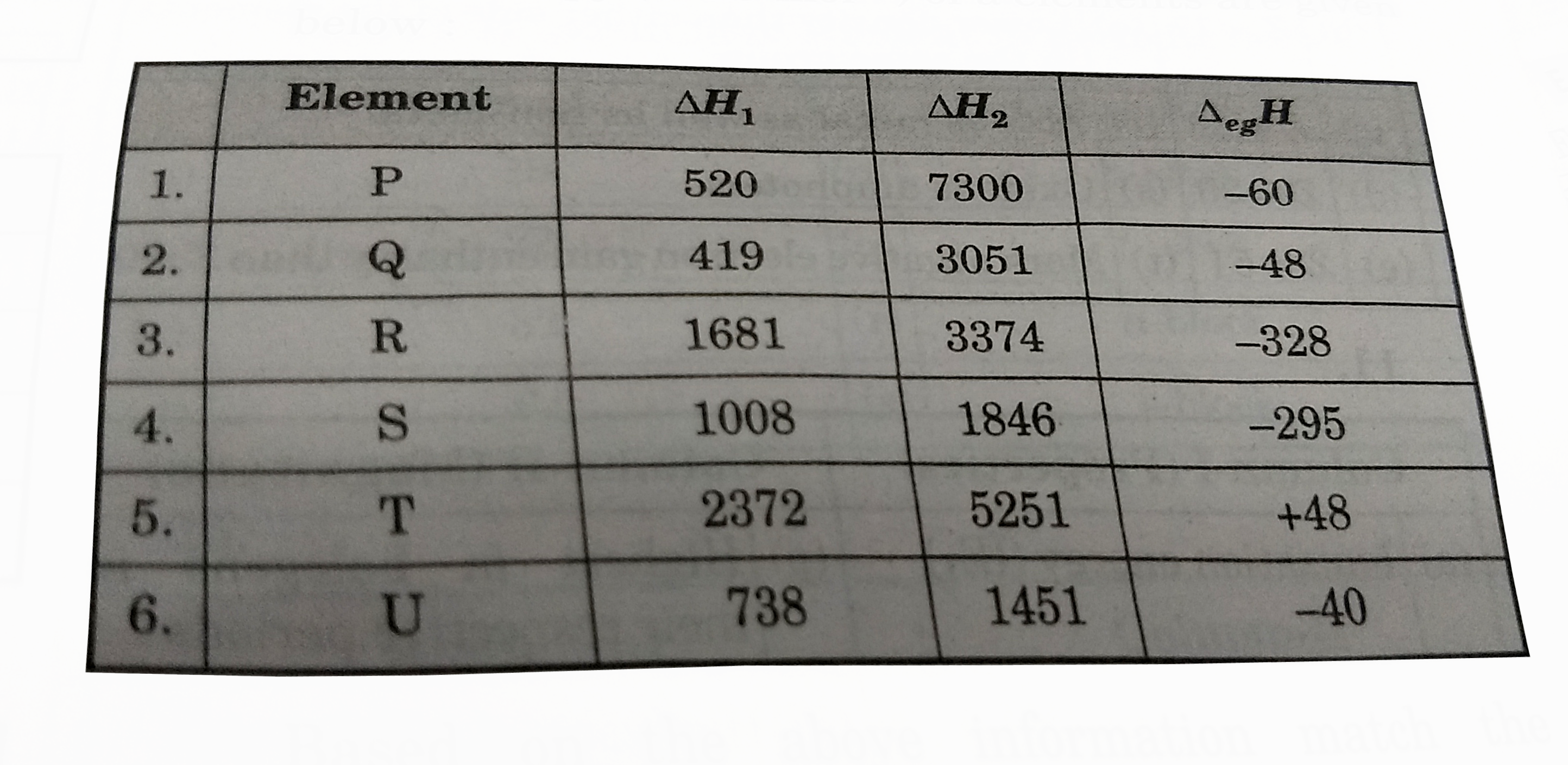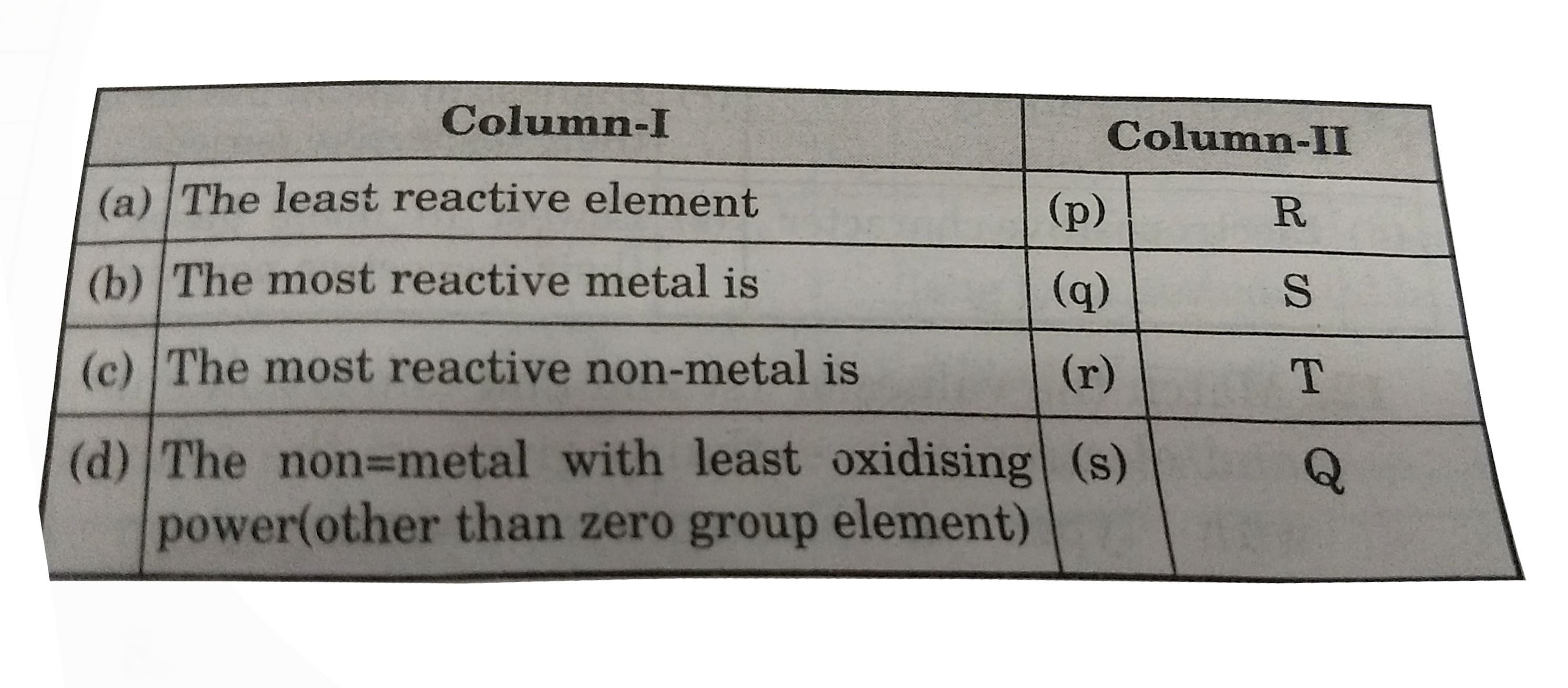Ionisation of energy Fɵ is 320kJmol−1. The electronic gain enthalpy of fluorine would be
−320kJmol−1
−160kJmol−1
+320kJmol−1
+160kJmol−1
The correct Answer is:A
To find the electronic gain enthalpy of fluorine given its ionization energy, we can follow these steps:
1. Understand Ionization Energy and Electron Gain Enthalpy:
- Ionization energy (IE) is the energy required to remove an electron from a neutral gaseous atom.
- Electron gain enthalpy (EGE) is the energy change when an electron is added to a neutral gaseous atom.
2. Relationship Between Ionization Energy and Electron Gain Enthalpy:
- Ionization energy and electron gain enthalpy have the same magnitude but opposite signs. This means:
Ionization Energy=−Electron Gain Enthalpy
3. Given Data:
- The ionization energy of fluorine is given as F∘=320kJ mol−1.
4. Calculate Electron Gain Enthalpy:
- Using the relationship from step 2, we can express the electron gain enthalpy as follows:
Electron Gain Enthalpy=−Ionization Energy
- Substituting the given value:
Electron Gain Enthalpy=−320kJ mol−1
5. Final Answer:
- Therefore, the electronic gain enthalpy of fluorine is:
Electron Gain Enthalpy=−320kJ mol−1
- Ionization energy (IE) is the energy required to remove an electron from a neutral gaseous atom.
- Electron gain enthalpy (EGE) is the energy change when an electron is added to a neutral gaseous atom.
- Ionization energy and electron gain enthalpy have the same magnitude but opposite signs. This means:
Ionization Energy=−Electron Gain Enthalpy
- The ionization energy of fluorine is given as F∘=320kJ mol−1.
- Using the relationship from step 2, we can express the electron gain enthalpy as follows:
Electron Gain Enthalpy=−Ionization Energy
- Substituting the given value:
Electron Gain Enthalpy=−320kJ mol−1
- Therefore, the electronic gain enthalpy of fluorine is:
Electron Gain Enthalpy=−320kJ mol−1
Similar Questions
Electron Gain Enthalpy
View SolutionIonisation enthalpy of Na would be same as
View SolutionCalculate the heat of formation of NaCl from the following data:
Heat of sublimation of sodium = 108.5kJmol−1
Dissociation energy of chlorine = 243.0kJmol−1
lonisation energy of sodium = 495.8 kJ mol−1
Electron gain enthalpy of chlorine =−348.8kJmol−1
Lattice energy of sodium chloride =−758.7kJmol−1.
View SolutionElectron gain enthalpy will be positive in
View SolutionUse the following data to calculate ΔlatticeHΘ for NaBr.ΔSubHΘ for sodium metal =108.4kJmol−1, ionisation enthalpy of sodium =496kJmol−1, electron gain enthalpy of bromine =−325kJmol−1, bond dissociation enthalpy of bromine =192kJmol−1,ΔfHΘ for NaBr(s)=−360.1kJmol−1
View SolutionThe enthalpy of vaporisation of water at 100∘C is 40.63KJmol−1. The value ΔE for the process would be :-
View SolutionThe lattice enthalpy of KI will be, if the enthalpy of
(I) Δf H− (KI) = -78.0 kcal mol−1
(II) Ionisation energy of K to K+ is 4.0 eV
(III) Dissociation energy of I2 is 28.0 kcal mol−1
(IV) Sublimation energy of K is 20.0 kcal mol−1<br>(V)Electron gain enthalpy for I to I− is -70.0 kcal mol−1<br>(VI)Sublimation energy of I2 is 14.0 kcal mol−1(1eV=23.0kcalmol^-1)
View SolutionThe first ionisation potential of Na is 5.1eV. The value of electron gain enthalpy of Na+ will be
View SolutionThe first (ΔH1) and second (ΔH2) ionisation enthalpies (in kJmol−1) and the (ΔHeg) electron gain enthalpy (in kJmol−1) of a elements are given below:

Based on the above information match the following columns.

View SolutionThe correct order of electron gain enthalpy (in kJ/mole) is
View Solution